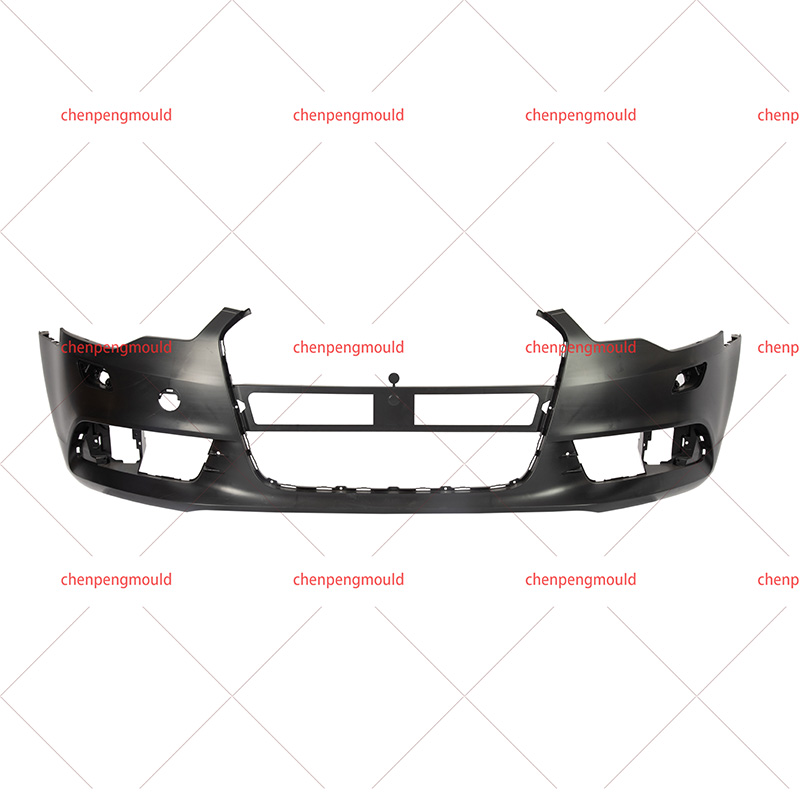Supply China Automotive Bumper Mold Maker Manufacturing
The process of China Automotive Bumper Mold manufacturing has undergone significant innovations over the years, driven by advancements in materials, technology, and manufacturing techniques. As automotive design evolves to meet changing consumer preferences and regulatory requirements, the demand for innovative bumper molds that offer enhanced performance, durability, and aesthetics continues to grow.
Advanced Materials:
One of the significant innovations in China Automotive Bumper Mold manufacturing is the use of advanced materials that offer strength, impact resistance, and weight savings. Traditional bumper materials such as steel and fiberglass have been replaced by high-performance thermoplastics, composites, and polymers, which offer improved durability and design flexibility. Materials such as polypropylene (PP), acrylonitrile butadiene styrene (ABS), and polyethylene terephthalate (PET) are commonly used in modern bumper molds, providing a good balance of strength, rigidity, and impact absorption.
Injection Molding Technology:
Injection molding technology has revolutionized the China Automotive Bumper Mold manufacturing process, allowing for the rapid and cost-effective production of complex bumper designs with high precision and consistency. This technology involves injecting molten plastic into a pre-designed mold cavity under high pressure, resulting in the formation of intricate bumper shapes with minimal waste and surface finish. With advancements in injection molding machinery, automation, and mold design software, manufacturers can achieve tighter tolerances, faster cycle times, and higher production volumes, driving efficiency and cost savings.
Foam-In-Place (FIP) Technology:
Foam-in-place (FIP) technology is another innovative technique used in China Automotive Bumper Mold manufacturing to enhance bumper performance and safety. This process involves injecting expanding foam into hollow sections of the bumper mold during the injection molding process, resulting in a lightweight yet durable bumper with enhanced energy absorption properties. FIP technology helps improve crashworthiness and occupant protection by dispersing impact forces more effectively and reducing the risk of injury in the event of a collision.
Multi-Material Molding:
Multi-material molding has emerged as a game-changer in China Automotive Bumper Mold manufacturing, allowing for the integration of different materials and components within a single bumper assembly. This innovative technique enables manufacturers to combine thermoplastics, elastomers, metals, and other materials to achieve performance, aesthetics, and functionality. By incorporating features such as integrated sensors, lighting systems, and aerodynamic elements directly into the bumper mold, automakers can streamline production, reduce assembly complexity, and enhance overall vehicle design.
Sustainable Manufacturing Practices:
In response to growing environmental concerns and regulatory pressures, China Automotive Bumper Mold manufacturers are adopting sustainable manufacturing practices to minimize waste, energy consumption, and emissions. Innovations such as lightweighting, recyclable materials, and eco-friendly processes are becoming increasingly prevalent in the automotive industry, driving the development of sustainable bumper molds that meet stringent environmental standards. By embracing sustainability, manufacturers can reduce their carbon footprint, enhance brand reputation, and contribute to a greener future.
Digital Design and Simulation:
Digital design and simulation tools have revolutionized the China Automotive Bumper Mold manufacturing process, enabling designers and engineers to visualize, analyze, and optimize bumper designs before production begins. Computer-aided design (CAD) software, finite element analysis (FEA), and mold flow simulation tools allow for virtual prototyping and testing of bumper molds, identifying potential defects, weaknesses, and performance issues early in the design process. By leveraging digital technologies, manufacturers can accelerate product development, improve design accuracy, and reduce time-to-market for new bumper designs.
Additive Manufacturing:
Additive manufacturing, also known as 3D printing, is emerging as a disruptive technology in China Automotive Bumper Mold manufacturing, offering new possibilities for rapid prototyping, tooling production, and customization. With additive manufacturing, complex bumper molds can be produced directly from digital design files, eliminating the need for traditional machining processes and reducing times and costs. This innovative approach enables manufacturers to experiment with new designs, materials, and geometries, fostering creativity and innovation in bumper mold manufacturing.




 +86-18357617666
+86-18357617666








